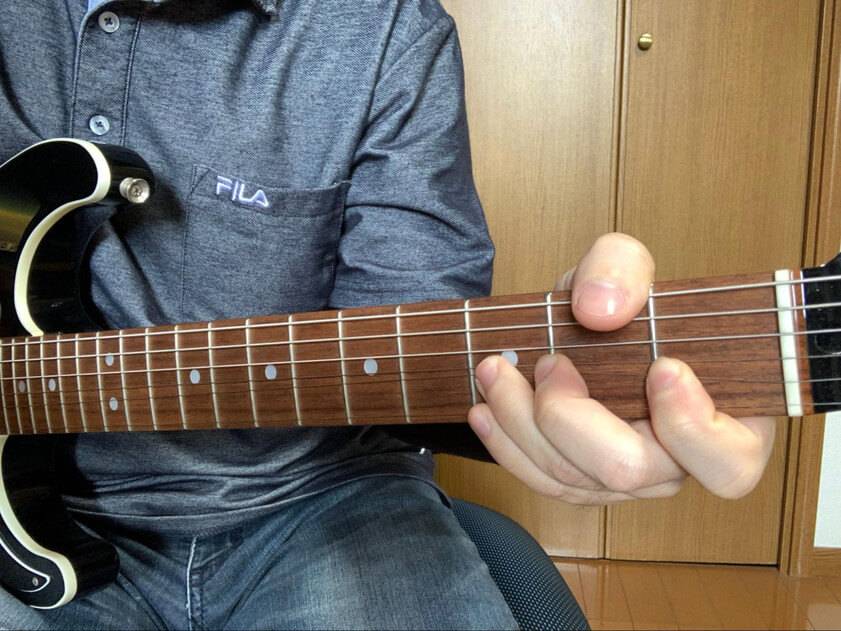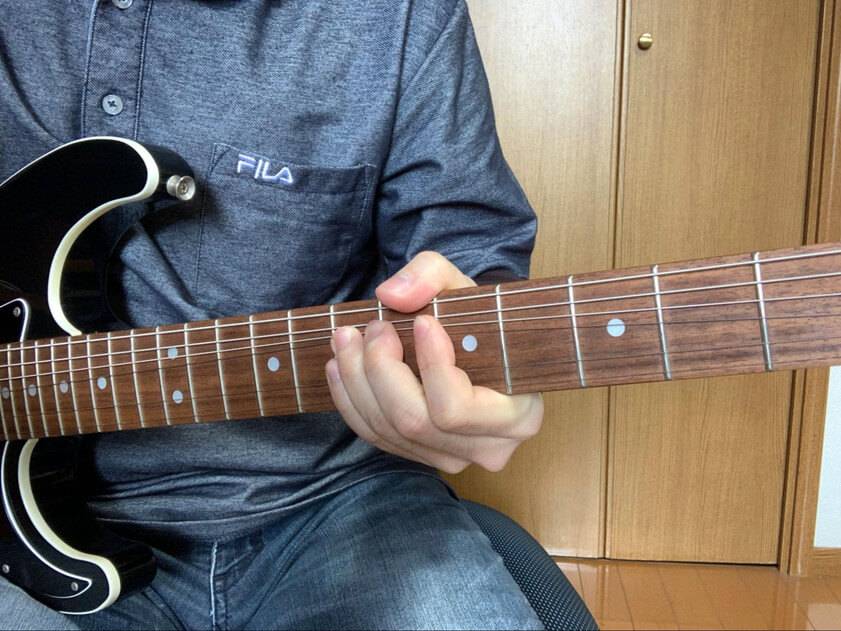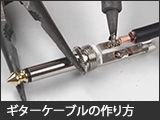Hello, this is Conservario.
Do you know about bending?
It’s a technique where you push or pull a string to change its pitch.
For many guitarists, bending is an essential part of guitar playing.
In this guide, I’ll introduce the basics of bending and how to practice it.
First, let’s check your hand position.
Place your thumb over the top of the neck for better grip.
Then, press down on any fret and push or pull the string.

Did you notice the pitch going up?
That’s what bending is!
“How much you change the pitch,” “How fast you bend the note”...
By considering these factors, you can create a variety of bending styles.
In fact, the possibilities are endless, depending on how you approach and combine different techniques.
Once you start getting the hang of it, try to place your ring finger on the 7th fret of the 3rd string.
While holding the note, push the string upward.

Did you manage to do it? If you can feel even a slight change in the sound, that’s a good start.
Also, there is something to keep in mind when doing a bending technique.
When you perform the bend with your ring finger, it’s not just with the ring finger alone.
You should use your index and middle fingers as well, so it’s a three-finger bend using the ring finger.
Please carefully check the form in the image.
If you don’t support your index and middle fingers, there’s a risk of injuring your finger, so be cautious.
When you start to get the hang of it, focus on how much the pitch changes when you do the bend.
If you research bending techniques, you’ll find there are various practice methods out there.
“Have someone who can already do bends check your technique, or record yourself and check the playback!”
↑ You’ll often see advice like this in books and blogs online, but...
It’s a hassle! And what if there’s no one around who can play guitar? What should you do then?
Actually, even as a beginner, there is a way to check the pitch of your bends on your own.
First, just play Do-Re-Mi.
Play the 5th fret (Do), 7th fret (Re), and 9th fret (Mi) on the 3rd string.
Play it a few times to confirm the pitch.
Now, play the 5th fret (Do), 7th fret (Re), and then bend at the 7th fret (Mi).
If it sounds like Do-Re-Mi with the bend, you’re good to go!
What you’re doing is bending the note at the 7th fret (Re) to transform it into the 9th fret (Mi).
You’ll realize this is quite challenging.
Most people probably won’t reach the correct ‘Mi’ note.
You’ll need to bend the string so much that you might wonder, “Is this even safe? Won’t the string snap?” To change from Re to Mi, you need to bend quite dramatically.
The trick, as mentioned earlier, is: 1) hook your thumb over the neck, 2) support with your index and middle fingers. These two points are key.
If your fingertips or joints start to hurt, don’t push it—rest your fingers.
As you practice, you’ll gradually get a feel for bending the string, and your fingertips will toughen up.
After playing Do-Re-Mi normally, repeat it with a bend on Re, like Do-Re-Mi (bending Re).
Once you can bend, even playing just the basic Do-Re-Mi sounds way cooler.
If you like blues or rock, bending is an essential technique.
Make sure to practice carefully and master it!
■ Conclusion
I’ve introduced how to perform bending and some important points to keep in mind.
What I’ve shared here is the safest and most straightforward approach.
However, the bending techniques of legendary blues and rock guitarists often have their own unique styles.
This is because, in the past, bending wasn’t even a technique used on the guitar, so it’s only natural for them to develop their own methods.
Some people bend with support from the index and middle fingers.
However, others prefer to do it with just one finger.
I’ve also practiced bending with one finger, but in strict recording environments, the pitch often becomes a bit off, so I stopped using that method.
The ease of bending can also depend on the guitar setup and string gauge.
If you’re struggling to get your bends right, it might help to reconsider your guitar’s setup and strings.
Sometimes, just making those adjustments can make bending much easier.
There are also many other things I didn’t have the chance to cover, such as the finger catching other strings and causing a loud noise, or the guitar and neck moving too much when bending.
Don’t worry about being perfect from the start.
Bending requires strength, so there’s no need to rush.
If you injure your fingers, playing guitar won’t be fun anymore.
Take it slow and practice a little every day to get the feel for it.
While practicing, try listening to blues and rock.
It will definitely help with your bending practice.
Once you can reproduce those subtle nuances, you’ll be a bending expert.
Thank you for reading until the end!
The “sound & person” column is made up of contributions from you.
For details about contributing, click here.











![[Guitar Mastery Guide] Essential Tools for Playing Electric Guitar](/contents/uploads/thumbs/5/2022/2/20220228_5_16889_1.jpg)





 DIY ギターメンテナンス
DIY ギターメンテナンス
 ギターケーブルの作り方
ギターケーブルの作り方
 ギターの種類
ギターの種類
 ギター名人ラボ
ギター名人ラボ
 ギタースタートガイド
ギタースタートガイド
 めちゃラク!ギター講座
めちゃラク!ギター講座















